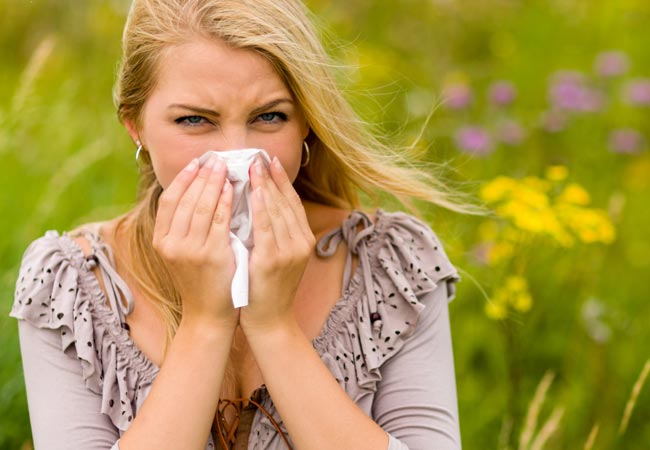Sneezing is the body’s way of expelling foreign particles like pollen, dust, smoke, and other irritants that make their way to the nasal cavity. It is a semi-autonomous reaction, which means it is often involuntary.
One of the most common conditions that bring about sneezing is an allergy. This is because, like common colds and the flu, allergies cause sinus drainage. By self-regulating, the body triggers this natural reflex.
To prevent frequent sneezing, you have to manage your allergies wisely. There are dozens of measures you can do to achieve this, including the five practical tips discussed below:

1. Know and Avoid Allergens
To prevent allergic reactions, you must identify what triggers them. An allergy trigger is called an “allergen”. Although it is important to avoid these particles, it sometimes poses a challenge, especially if there’s no way you can remove any chance of coming in contact with it.
Below are some allergens that are very common but can sometimes be difficult to avoid:
Pets
Contrary to popular belief, pet fur is not the culprit in triggering allergic reactions but their saliva, dried urine, and dead skin. This means that even if you have a furless dog in the house, you are still at risk of suffering from pet allergies.
If removing the animal is not an option, you can try limiting the space they use. If possible, keep them outside or avoid bringing them in if you have a carpet, and replace beddings and other plush surfaces they frequent. Washing them at least once a week and bringing them to a pet groomer regularly should also help.
Dust Mites
Tiny insects are known as dust mites also serve as a major trigger of allergies. To reduce the effects of this type of allergen, you should avoid having carpets inside the house and go for vinyl or hardwood flooring.
If you have plenty of soft toys and cushions, make sure to clean them often and regularly so they don’t harbor dust mites. This can be done by using a vacuum with a high-efficiency particulate air filter or washing at high temperatures.
Mold Spores
Molds also indirectly cause allergies through small particles they release into the air. Called “mold spores,” these allergens can be avoided by maintaining good ventilation inside the house. Indoor plants and damp cupboards should also be removed from the house – the key is to keep the place as dry as possible which means drying clothing inside is a no-go.
2. Monitor Your Symptoms
Monitoring the progression of your allergy can help determine whether you require stronger medication and, ultimately, manage it effectively. You can do this by keeping a diary where you can detail the things you eat, what you do, and when the allergy symptoms emerge. You can also indicate things that seem to help, like wearing a mask or staying away from pets.
3. Always Take Medication as Prescribed
Allergy medications should always be taken under the prescription of a licensed medical professional. This way, you not only deal with your symptoms and the underlying condition itself but also avoid taking the medicine.
While you should never self-medicate, knowing what specific allergy drugs can do and how often they should be taken can also help you manage symptoms effectively.
Antihistamines
Commonly known as anti-allergies, antihistamines help alleviate runny nose, sneezing, and itchy eyes due to allergic rhinitis. It can also help with food allergy symptoms like hives.
Newer antihistamines like cetirizine, loratadine, fexofenadine, and desloratadine have lower chances of creating side effects compared to the older generation of medicines. They are also known to have longer lasting effects which is why they should only be taken once a day rather than every six hours or so.
Decongestants
Decongestants are used for the quick and effective relief of nasal congestion and a stuffy nose. It is ideally used in the short-term as it has several side effects that range from discomfort that can keep you awake at night to more serious conditions.
Allergy Shots
Another way you can manage your allergies is via taking allergy shots — a therapy that entails introducing the body to small amounts of allergen with the dose increased over a specific period of time. This is usually done weekly, with the dose escalating between three and six months, and followed by periodic injections for at least three years.
Recommended Article:
- How To Get Treated For Sinusitis Without Surgery?
- Herbal Remedy for Eyes Allergy
- Tooth Decay Prevention: Daily Dental Care Tips
4. Clear the Air with AC
Air conditioners are called that for a reason – they can condition the air. Aside from keeping it at a comfortable temperature, AC units also offer a mold-preventive effect that you can use to your advantage when managing your allergies. When the AC is turned on, it keeps the room dry and unlivable for molds.
Of course, you have to make sure to keep the filters clean so as not to make your sniffles worse. Using more AC units inside the house can also help boost air circulation. You also have the option to add more fans or opening the windows for more natural ventilation.
5. Go for Synthetic Items
Instead of using doormats made with natural materials, choose ones that are made of plastic and wash them regularly. Roller blinds can also be used in place of curtains while vinyl or plastic furniture is ideal since they can be easily wiped with damp cloth to prevent dust circulation in the air. Keeping real plants indoors is also a bad idea if you’re allergic to mold spores.
Say Goodbye to Allergies
Managing your allergies well means saying goodbye to constant sneezing, watery eyes, and a runny nose. To do so, you should get to know your surroundings well and understand how to manipulate your place in a way that will keep allergens at bay.